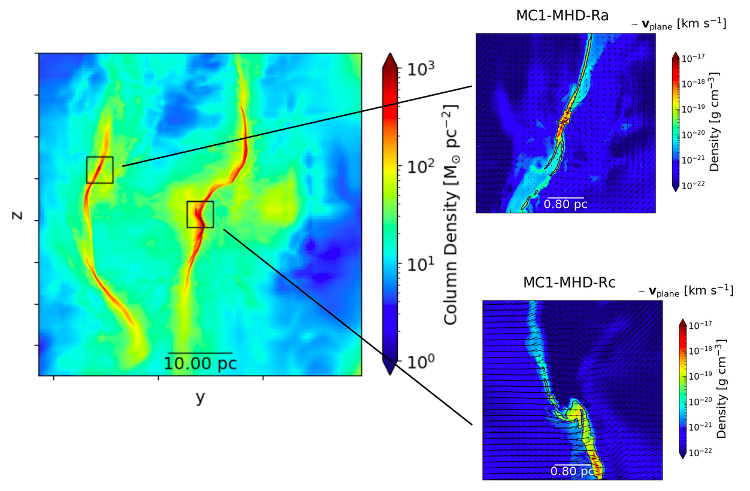| EPoS Contribution |
|
Shock compression and self-gravity: two ways to form filaments?
Shashwata Ganguly PH1, Cologne, DE | |
| Molecular clouds are threaded with filamentary sub-structures. How exactly the different filaments form, however, remains an open question. We investigate the dynamics of forming structures by evaluating the contribution of different energy terms (kinetic, thermal, magnetic and gravitational) in young molecular clouds. For this purpose, we use the SILCC-Zoom and SILCC deep-zoom simulations, which follow the self consistent formation of molecular clouds from ~100 parsec scales down to a maximum resolution of around 0.008 pc (1600 AU). The simulations include a galactic potential, self-gravity, magnetic fields, supernova driven turbulence, as well as a non equilibrium chemical network. We identify structures (sheets, filaments, and cores) inside selected regions using a dendrogram algorithm, and follow the dynamical behaviour of the hierarchically forming structures. We find that, of our two prominent larger filamentary structures, one is more quiescent and close to self gravitating, while the other is shock compressed and leads to smaller scale gravitationally bound regions. By studying the morphology of the forming structures, we further observe that in both cases, core-like structures appear at around ~0.1 pc, and are embedded inside filaments. | |
 | |
| Caption: Column density map of a ~50 parsec region in the SILCC-Zoom cloud MC1-MHD. The two highlighted boxes show density slices from two analyzed regions of size 4 parsec, with the planar velocity field shown using arrows. The contours represent a prominent dendrogram structure inside the analyzed region in each case. Of the two regions, MC1-MHD-Ra is relatively quiescent and self-gravity dominated, while MC1-MHD-Rc represents a shock layer. | |
| Collaborators: S. Walch, PH1, DE S.D. Clarke, ASIAA, TW D. Seifried, PH1, DE |
Suggested Session:
Filaments |

